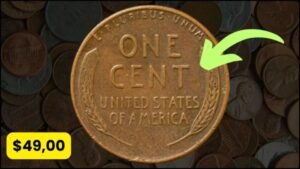Have you ever rummaged through your loose change and wondered if that old quarter could be a hidden gem? Back in 1976, the U.S. Mint released special Bicentennial quarters to celebrate America’s 200th birthday. Most are just worth 25 cents, but some rare versions with unique errors or pristine conditions have sold for thousands.
In this post, we’ll dive into what makes these coins special, how to spot valuable ones, and why numismatics enthusiasts still chase them today. Stick around—you might just discover a treasure in your pocket!
What Are Bicentennial Quarters?
Bicentennial quarters are commemorative coins minted to mark the U.S. bicentennial in 1976. They feature George Washington on the front with dual dates “1776-1976,” and a colonial drummer on the back, symbolizing the revolutionary spirit.
Types of Bicentennial Quarters
There are clad versions (copper-nickel) from Philadelphia (no mint mark) and Denver (“D”), and silver-clad ones from San Francisco (“S”). Proof sets add extra shine for collectors.
The History and Origin of Bicentennial Quarters
These coins trace back to the American Revolution Bicentennial Commission in 1966, planning for the 200th anniversary of independence. The U.S. Mint held a design contest in 1973, won by Jack L. Ahr for the drummer reverse. Production ran from 1975 to 1976, with over 1.6 billion clad quarters made—making them common but exciting for numismatics fans.
The Treasury initially hesitated due to past commemorative flops, but public enthusiasm won out. Chief Engraver Frank Gasparro refined the design for authenticity.
Why Bicentennial Quarters Are Valuable Today
In numismatics, rarity drives value. While most circulated Bicentennial quarters fetch face value, high-grade or error coins are prized. Silver versions, with 40% silver content, hold melt value around $2-3, but collector demand pushes prices higher. Today, they appeal to hobbyists interested in most valuable coins from U.S. history.
Factors Influencing Value
Condition (graded MS-60 to MS-70), mint errors like doubled dies, and silver composition matter most. As inflation rises, these tangible assets gain appeal.
How to Identify and Benefit From Rare Bicentennial Quarters
Spotting a rare Bicentennial quarter starts with checking the mint mark and condition. Look for “S” on silver ones or errors like off-center strikes. Use a magnifying glass for doubled images or missing letters.
Ways to Engage and Profit
Join numismatics clubs, attend coin shows, or sell via auctions like eBay or Heritage. Grading by PCGS or NGC boosts value— a smart move for potential sales.
| Mint Mark | Type | Average Circulated Value | High-Grade Value (MS-68+) |
|---|---|---|---|
| No Mark (P) | Clad | $0.25 | $100 – $1,000 |
| D | Clad | $0.25 | $550 – $3,750 |
| S | Silver | $2-5 (melt) | $10,000 – $19,200 |
Notable Facts and Records About These Coins
Over 1.6 billion clad quarters were minted, but only 11 million silver business strikes. The record sale? A 1976-S silver proof fetched $19,200 in 2019. Errors like a doubled-die obverse sold for $8,400 in 2023. Fun fact: Some were struck on wrong planchets, creating ultra-rare hybrids.
| Top Sales | Year Sold | Price | Description |
|---|---|---|---|
| 1976-S Silver Proof | 2019 | $19,200 | MS-69 grade |
| 1976-D Clad Regular | 2017 | $6,463 | High mint state |
| Doubled-Die Error | 2023 | $8,400 | MS-66 |
| 1976-S Proof Deep Cameo | 2007 | $2,760 | Pristine condition |
Expert Tips for Coin Collectors
Start small: Build a set of all mint types. Store in acid-free holders to prevent tarnish. For rare Bicentennial quarters, get professional appraisals—don’t clean them, as it lowers value. Follow numismatics forums for market trends; prices fluctuate with silver spots.
Frequently Asked Questions
Are all Bicentennial quarters valuable?
No, most are worth 25 cents if circulated. Rare errors or silver proofs are the gems.
How do I know if my quarter is silver?
Check for the “S” mint mark and a brighter, heavier feel. Silver ones weigh 5.75 grams.
Where can I sell my rare coins?
Try certified dealers, online platforms like eBay, or auctions for the best prices.
What’s the most common error on these quarters?
Doubled dies on the obverse, where letters appear shadowed.
Do Bicentennial quarters contain real silver?
Only the “S” versions have 40% silver; others are clad.
Conclusion
rare Bicentennial quarters remind us of America’s revolutionary past while offering real value to collectors. Whether you’re a numismatics newbie or seasoned hobbyist, checking your change could uncover most valuable coins. Hunt through your jars, join a community, and who knows—you might strike gold! Share this if it sparked your interest, and explore more on U.S. coin history.




